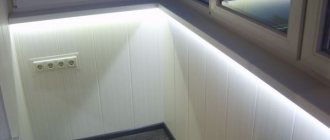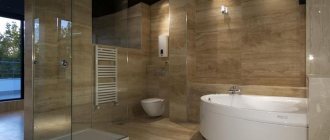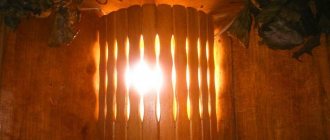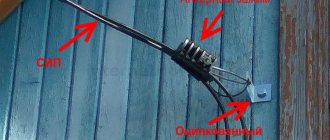What not to do
There are prohibitions for the entire premises and for its individual zones.
Restrictions according to GOSTs and SNiPs
Prohibited activities are listed in local regulations. These lists may differ in different regions, but basically they are the same. For Moscow, Resolution No. 508 PP applies. According to this document, it is prohibited to lay grooves in reinforced concrete slabs and interpanel joints.
Channels can be laid in the finishing or under a suspended ceiling or plasterboard sheathing of a metal frame.
Some restrictions are introduced by GOSTs and SNiPs. Technical standards prohibit open wiring. You can only use a triple wire with a phase, neutral and protective conductor. Each of them must be in its own protective shell. All three wires are connected together under an additional layer of insulation.
The use of metal coating without insulation is not permitted.
For laying, corrugated or plastic pipes should be used. Metal ones cannot be used. If the cable is damaged, such a coating will not be able to protect against electric shock. The use of electrical tape is not permitted.
There is no need to skimp on communications. It is better to take a thicker section so that the core does not burn out under intense loads. Typically, an aluminum cable with a cross-section of 4 mm2 or a copper cable with a cross-section of 2.5 mm2 is used. You cannot combine copper and aluminum - this will lead to a reaction between them.
It is prohibited to place switches, electrical panels and distribution boxes in the bathroom.
Sockets and all devices must have a residual current device (RCD). There are special models for wet rooms. All equipment must be grounded. To minimize the risk, even a bathtub can be grounded if it is made of steel or cast iron.
Under no circumstances should you do grounding yourself by connecting a wire to a heating radiator or water pipe. This can be dangerous to life and health.
According to the Civil Code of the Russian Federation, any changes that require inclusion in the technical passport and the BTI plan require the creation of design documentation.
Only an engineering organization with SRO approval can draw up a project. Documentation must be approved by government authorities. The installation of lighting, as a rule, cannot be classified as a refurbishment, but it may be part of a plan that requires a number of changes to be made to the layout and energy supply of the apartment.
To avoid mistakes, everything must be carefully planned and calculated before starting work. To avoid getting an electric shock, you should work with the electricity turned off.
Restrictions for individual zones
Lighting in a small bathroom, as well as in a spacious room, depends on areas with different degrees of humidity.
Four sections can be distinguished:
- The space above the bathtub, as well as inside the shower stall, where there is especially a lot of water and steam, and the humidity concentration is the highest. Here you can install lamps with a power of up to 12 W with a protection index of IP 674 or more. This parameter is always indicated on the packaging or in the instructions. The first number indicates the degree of protection against dirt. It ranges from 1 to 6. The second shows how well the product is protected from water and steam. The maximum value is 8. At this level, it can be immersed in liquid for a long time. The last number is impact resistance. It ranges from 0 to 10.
- The space adjacent to the sink and shower stall and other plumbing fixtures. Drops of water may reach here. You can use lamps with a power of up to 24 W and a degree of protection IP 452.
- An area located at a distance of 50 cm from the sink and other appliances. There are no power restrictions here anymore. The index must be at least IP 242.
- The last section is everything that comes next. Drops usually don't reach here. Moisture enters here in the form of steam and condensate. Devices with an IP rating of 011 and higher are used in this area.
This zoning applies regardless of the presence of a hood. It is suitable for separate and combined bathrooms.
Basic lighting rules
It seems that choosing lighting fixtures is not such a difficult matter. But the bathroom differs from the rest in that there is almost no natural light inside. One light bulb is not enough to provide proper comfort. It is necessary to use intense light, general or local.
The modern market offers many solutions in this direction. You need to choose what is ideal for a particular room. For example, small and spacious areas require different proportions both in terms of intensity and placement of light sources.
Security questions
This requirement can be considered perhaps the most important. When choosing lighting fixtures, you need to carefully study the index with markings. Their decoding will be as follows:
- The first number indicates how protected the device is from dust. If there is no protection, then it costs 0. Full protection is designated as 6, this is an important indicator.
- The second number is for the level of moisture protection. If it is 8, it is completely waterproof. This means that the device will withstand even if it is immersed directly in water for an extended period of time. But appliances with the number 0 are not suitable for bathrooms at all.
- The third number is the impact resistance value. This indicator can range from 0 to 10. If the value is maximum, then the formation of dents, chips and cracks after mechanical impacts of up to 20 J is acceptable. Some manufacturers refuse to indicate impact resistance, then the index will only have two digits.
IP 442 is the optimal level that provides protection from negative factors. The location area and operating conditions must always be taken into account. The marking must be a minimum of IP 674 in the case of luminaires inside showers, next to washbasins. IP 452 – marking suitable for ceiling areas in the same premises.
LED luminaire IP 442
How many lamps will be needed?
The number of lighting fixtures in the bathroom depends directly on its area. If the room is very tiny, and its area is about 5 m2, then a chandelier in the center of the ceiling with two or three lamps will be enough.
But even if the bathroom is small, it is better to additionally illuminate the washbasin and mirror area to make all cosmetic procedures much easier.
If the bathroom is spacious enough, then it is necessary to provide zone lighting, the features of which will depend on the configuration of the room, design ideas and some other factors.
It is important to consider a lot of other factors that affect the lighting in the bathroom. These include:
- interior style, or rather the chosen color scheme, because, as you know, light shades reflect light fluxes more, which means the room will seem more illuminated. The same can be said about glossy, mirror and glass surfaces;
- the height at which the lamps will be installed, because the closer they are to a person, the brighter the light they give;
- type of lamps.
It is better to decide on the number and location of lighting fixtures at the stage of repair work in order to avoid unnecessary hassle and waste in the future.
Universal solutions
Today, spot systems are most often used to illuminate bathrooms and toilets. They are relatively inexpensive, fit into any design, and consume little. In general, some advantages. There are plenty to choose from: round or square, rotary and stationary, with and without pendants (shades), multi-colored and plain.
Spot models
Moreover, to make spot lighting it is not at all necessary to have suspended ceilings; models are also offered with a socket located outside. By the way, they turn out to be even more effective than those built into the ceiling in terms of creating a uniform light flux.
Models with cartridges
In addition, once you set a goal, you will be able to handle their installation yourself. Just be responsible when choosing the brand of spotlights. Products must be of high quality and airtight - high humidity in the bathroom should not in any way affect their operation. Of course, they will cost you an order of magnitude more, but this is your safety!
What type of lamp should I choose?
Today, the choice of lighting devices is so extensive that everyone can choose the option that best suits their wishes. So, according to the type of location on the surface, lamps can be:
- open;
- built- in This option is preferable for miniature bathrooms with not very high ceilings.
Depending on the location, the lamps can be:
- ceiling _ This is a timeless classic. Each bathroom should be equipped with at least one ceiling lamp, which will be responsible for the general light in the room;
- wall- mounted These are lamps that are designed to highlight certain functional areas of the room;
- floor lamps perform more of a decorative function; they can add zest to the interior of a room and visually expand the space of the room.
Each of the lamps used can perform one or several of the following functions:
- work lighting;
- decorative lighting;
- directional lighting;
- general lighting.
, different types of lamps can be used as light sources
- incandescent lamps;
- halogen;
- luminescent;
- LED
Everyone has the right to choose the type of lamps themselves, depending on the type of lamp or their own desire to save money, but special attention should be paid to LED lamps. They are considered the most economical and safe, because they do not heat up during operation. LED strip is also often used, which adds a real zest to the bathroom interior.
The only drawback of LED lamps is their high price.
Chandeliers – forever!
The usual ceiling lamps or chandeliers do not lose their relevance. The choice of model is made based on the scale of the room. Although often the initial parameters of showers (as well as toilets) greatly limit design possibilities. It is logical that a multi-tiered chandelier in a cramped room will look ridiculous. Flat, concise options are more appropriate here. And it's much easier to care for them.
Flat chandeliers
Similar lamps are often installed on walls - this is very convenient. The illumination is carried out at the level you need. And at the same time, you do not create your own shadow, as is the case with ceiling lamps.
Wall lighting
For these reasons, it makes more sense to install a pair of lamps so that the rays emanating from them intersect at the place where you most often stay while in the bathroom.
If the bathroom area and ceiling height allow, you can install any lighting fixture. Your choice is limited only to moisture-resistant models, adjusted for the location of use and design. And in the evening, with other light sources extinguished, a chandelier with such a luxurious carved shade will provide you with stunning light displays.
Selecting the appropriate lighting power
Of course, there are engineering laws, formulas for calculating illumination with several variables and exact results. But in practice, the lighting intensity is rather selected by eye, based on the principles of “like-dislike”, “already annoying or still quite tolerable”.
The number of mirror and reflective (glossy) surfaces plays an important role: they visually increase illumination.
If there are many light sources, you can consult with a designer, a technical specialist, or simply on an Internet forum.
It is important to take into account sources of natural light: windows in bathrooms are not uncommon in dachas and cottages, and in city apartments there are transparent windows under the ceiling. During the daytime, they allow you to save electricity - use the bathroom without turning on the lights.
Pendant lamps (shades)
Photo: creativehomeidea.com
Lamps-shades are perfect for the main lighting of the bathroom. They are installed on the top of the wall or ceiling. The quantity is determined by the area of the room; if the room is small, then one powerful lamp will be enough. You can also install multiple lighting fixtures on the ceiling or walls.
Choosing suitable lamps - what you need to know
The number of lamps in the bathroom depends on the area. But even in the smallest bathroom, the minimum is two light sources on opposite walls. There is no maximum, since you can easily highlight:
- mirror on the sides;
- the lower part of the furniture and the bath itself;
- niche perimeter; a distant shelf or hanger.
A medium-sized bathroom will benefit if several lamps can be switched on in different orders, for example:
- for shower only;
- for cosmetic procedures;
- for preparation for and during washing;
- for meditation while lying in the bathroom (moderate, white or colored lighting is suitable).
Surface mounted ceiling lights
Photo: images.meredith.com
Surface-mounted lamps are the ideal solution to the problem of bathroom lighting. They are easy to use, economical, and can be easily installed on any ceiling. Such lamps allow you to create comfortable conditions for cosmetic and water procedures. They are protected from dust and moisture by shades that prevent the entry of wet steam and shower splashes. By installing overhead ceiling lights in your bathroom, you can endlessly enjoy the radiant and warm light.
How to properly position light sources in the bathroom
Must be avoided:
- Bright blinding glare.
- Distortions of reflection in the mirror, including colored spots.
- Shadows falling on objects and areas that are frequently used.
Lamps and lampshades tend to heat up. Make sure that children cannot reach them to avoid burns.
Furniture lighting
Furniture, large pieces of equipment, niches and built-in cabinets are illuminated along the perimeter, as well as along the edge of open shelves.
If necessary, highlight objects attached to the wall (hanger, heated towel rail).
The installation sites for water meters must be clearly visible with primary or additional lighting.
Consider the characteristics of family members and their health. Someone has poor eyesight, which means you need to try to highlight with bright color or lighting: a hanger, a socket, a place for the remote control.
All protruding edges and edges should be clearly visible, and lighting will play a decisive role in this.
Floor and ceiling lighting
Floor lamps with color-changing lighting are very beautiful. They, as well as spotlights at a level of 5-15 cm above the floor, bring some mystery, hint at large pools, the sea and its secrets.
True, you need specialist advice to determine how advisable it is to place the lighting at floor level (or even lower) in this particular house or apartment.
If you have the slightest doubt about the safety of such a project, it is better to consider other options.
The design of the ceiling is directly related to the possibility of placing lighting fixtures. Single-color stretch ceilings, welded stretch ceilings and two-level ceilings provide many unusual effects that can be achieved with the help of lighting.
Decorative lighting
She may be:
in form and structure:
- point;
- linear;
- scattered - semi-hidden, for example, by the edge of a two-level ceiling.
by color:
- colored plain;
- changing color;
- with flickering and “winking” modes, like in New Year’s garlands.
The best-designed lighting system will not work fully if ventilation does not function well enough, if water vapor and dampness accumulate and remain for a long time.
Colored water
Photo: aqualin.ru
Nowadays, anyone can arrange a real aqua show and unforgettable relaxation in their bathroom. This is possible using shower heads, faucets, LED heads, colored strips, etc. Such devices allow you to decorate the room with new colors, making the atmosphere more cozy and comfortable. Such lights can have several colors and are very easy and quick to install. In addition, these devices can also have many useful and interesting functions that make water procedures even more enjoyable.
Mirror and washbasin lighting
Depends on the overall style and design of the bathroom:
- Figured lamps on both sides of the mirror.
- Illumination around the perimeter, including the edges of the shelves and the lower border of the sink.
- Sometimes a large wall lamp in the center above the mirror and sink is enough.
Tinted, matte lampshades and the use of energy-saving lamps are recommended. The easiest way to select the lighting intensity is by experiment.
If anyone in the family uses contact lenses, good mirror lighting is vital. In this case, it can be considered mandatory to install two symmetrical lamps to the right and left of the mirror.
It is advisable to allocate a separate shelf or niche for a container with lenses and lens care products.
Styles and types of lamps
by location area :
- Sconces are wall fixtures of various shapes. They are produced in classic, oriental and modern styles.
- Spot - look good in a small bathroom. They are usually installed on the ceiling, in niches, corners or along walls, in the shape of a square, circle, wave, etc.
- Ceiling - large chandeliers in various style variations. They should have several lamps. But in a small bathroom, such lighting will visually reduce the height of the walls.
Types of lamps:
The most common interior option is spotlighting in the bathroom. The main thing is to choose the right lamps.
LEDs and RGB strips are the newest development at the moment.
Their advantages include:
- the ability to use them in rooms with high humidity;
- variety of colors;
- this is the most energy-saving type of lamps - 60% more economical compared to alternatives;
- such lamps are environmentally friendly;
- service life declared by manufacturers is 10 years;
- many models are available with a control panel that changes the rhythm, color and intensity of the light.
Halogen lamps. They have the following properties:
- bright light;
- low energy saving;
- direct, non-diffused lighting;
- cheapness;
- strength;
- instability to overvoltage.
The scope of application of halogen lamps is diverse: automotive industry, interior, street lighting, household appliances. For this reason, they are easy to find on sale.
Incandescent lamps are the most common and versatile type of lighting and have been used in ceiling and wall fixtures for over 140 years.
Characteristics:
- resistance to temperature and voltage changes;
- minimum energy consumption;
- safety - a broken incandescent lamp does not emit mercury vapor, like some types of similar devices.
What types of lamps are there - advantages and disadvantages
| Type of lamps | pros | Minuses |
| Incandescent lamps | Cheap. Gives soft light. Turns on quickly. | They are heating up. Not suitable for installation in suspended ceilings. They burn out quickly. Not economical. |
| Halogen | High light output. Long service life. Can be used for spotlights in suspended ceilings. Available in two versions: 220V and 12V. | Connected via stabilizer. They deteriorate from touching the skin. They are warming themselves. Often the base burns out from the light bulb. |
| Luminescent | Economical. Choice of color shades of emitted light. Two contact options - rods and base. Smooth diffused light flux. | Sensitivity to low temperature. Presence of mercury vapor in the flask. You can't break it. |
| LED | Repairable. If one diode burns out, the cluster can be repaired and the lamp will continue to work. Economical. Durable. Wide variety of colors. Possibility of programming. Not afraid of frequent switching on/off. | Expensive. Switching power supplies are required. Without them, lamps quickly fail. Instead of the stated 11 years, after 3 years the crystals lose their brightness and begin to fade. For comfortable work, diffuser shades are required. |
Installation
The material of the ceiling covering in most cases becomes the determining criterion for choosing a lamp. If there is no overlay trim and the ceiling is a painted concrete slab, an overlay model in the form of a plate with a matte shade is best suited.
The lighting in a small bathroom will be quite intense if the lighting device is designed for two LED bulbs with a power of 7 W each.
It is installed as follows:
- Using a drill or hammer drill, holes are made in the concrete for self-tapping screws.
- The metal base of the lamp is applied to them and screwed to the base with self-tapping screws.
- The electricity in the house is completely switched off using an automatic machine.
- The electrical wire is connected to the lampshade.
- Light bulbs are screwed in.
- The lampshade snaps into place.
- The electricity is turned on and the operation of the device is checked.
- It will be more difficult to attach lighting equipment to a plasterboard base.
- If multi-level light is installed in the bathroom, the design of the room will only benefit from this. But realizing such an idea is not so easy.
First, a lighting design plan is drawn up, then according to it, the location of the light bulbs is marked. Double-insulated wires are led to it; they are laid along a metal profile, with the help of which a frame is formed for installing drywall.
The wires are secured with ties. Before installation, holes are drilled on a sheet of plasterboard for ceiling lights of the required diameter. After attaching the sheet, wires are threaded through them, which are then stripped and connected to the terminals of the lampshade. At the final stage, a light bulb is inserted into the lamp.
The lighting of the toilet is done in the same way if plasterboard is used as a ceiling finish.
It is even more difficult to install lamps on a stretch ceiling film. Carrying out such a procedure requires professional skills and the ability to make accurate calculations.
Without going into details, the installation of lighting equipment is carried out as follows:
- First, the frame of the lighting fixture is attached to the concrete base.
- Then the suspended ceiling is installed.
- Afterwards, holes are formed in the film.
- It is connected to the frame of the device using special insulating rings (they prevent possible rupture of the film).
- At the final stage, the light bulbs are inserted into the frame.
Note! To ensure that the canvas lasts longer and does not turn yellow when heated by lighting fixtures, you need to choose LEDs with a base for lighting the bathroom.
They do not heat up, which means that the film next to them will not lose its physical properties.
Top or ceiling level lighting
In small bathrooms, they usually make do with one lamp. It is quite enough for lighting. And if the room is larger, then it is better to install several pieces to distribute the light evenly. One is above the bathtub and the other is by the door.
Using small lamps with halogen lamps, you can create multi-position lighting (“starry sky”).
Lighting fixtures can be of different shapes: round or oval. It is important that they complement the design of the room.
Medium or working light level
The most important thing about medium lighting levels is to highlight important work areas. Usually this is a washbasin and a mirror. Install two lamps symmetrically on both sides at the top of the mirror. If it is small, then choose smaller lamps too.
This will create bright lighting that will not dazzle your eyes or create unnecessary shadows. It is important that the lighting devices are not reflected in the mirror, then your face will be clearly visible.
A great idea for a bathroom is lighting around the perimeter of the mirror. Strip LEDs, which are especially popular now, are suitable for these purposes. It is not advisable to install colored lampshades in this area.
If you have enough space for furniture in your bathroom, you can use lighting for it.
Build small light bulbs into doors, cabinets, and countertops. This will create the necessary accents in the room, elegance and a romantic mood.
Nowadays it is fashionable to illuminate the bathtub. It creates the necessary relaxing mood. But this option is not cheap and not everyone can afford it.
Don't be upset if you can't afford it. To create a more private atmosphere, sconces are also suitable. Choose one with a colored glass lampshade. Install it on the side of the bathtub, but not above it, for safety reasons.
- For a spacious bathroom, but with a slightly high ceiling, you can install a high floor lamp. This way the light will fall beautifully on the water.
- Swivel lights are also very good for mid-zone lighting. You can adjust the direction of the light yourself, where it is convenient for you.
Floor level lighting
Floor lighting is optional but not required. Its use creates a special magical atmosphere.
If you still decide to use it, then choose closed floor portholes (flashlights). Translucent lamps are also suitable for these purposes. Alternatively, you can use aromatherapy candles.
The influence of lighting on the functionality of the bathroom
Tiny combined bathrooms are gradually becoming history, as is a single light bulb screwed above the door or in the central part of the ceiling. To carefully consider what your bathroom lighting will be like, you just need to remember how much time we spend here and what we do.
As soon as we wake up, we rush to the bathroom. If you are the happy owner of a separate bathroom, then this room will still be among the first ones that we need to visit in the morning. After all, we are used to washing and brushing our teeth here.
Even if there is natural light in the bathroom, additional lighting fixtures should be present here in such quantities that the room is pleasant and convenient to use even in the dark
In addition, here we are:
- We take a hygienic shower. This mandatory and pleasant morning procedure can be postponed until the evening - it’s not that important.
- We bathe our children. Often such an event is accompanied by abundant foaming and swimming of favorite toys.
- Shaving - this activity requires high-quality light and is relevant for representatives of both sexes.
- We pamper ourselves with SPA treatments. In particular, we take a bath with salt, plant extract, foam and other relaxing or inspiring additions.
- We wash it. Yes, the washing machine is most often located here. Besides, sometimes you just need to quickly wash something or rinse it – it’s a matter of minutes.
- We take care of our skin and apply makeup. That is, all creams and cosmetics, as a rule, are located on the shelves of furniture that can be placed in this room.
- We treat our nails, wash our hands after visiting the toilet, returning home from the street or just because.
In general, if it is pleasant to be in a room and it pleases us with its appearance, then there will definitely be something we would like to do here.
In addition to the light that will penetrate the room from sources hidden behind the frosted glass of the wall, its space will be illuminated by a warm glow from the fireplace and candles
As you can see, the list of functions that we ourselves have assigned to this room is quite impressive. Sometimes we need a bright, directional stream of light that leaves no shadows on our image in the mirror. Another situation is associated with pleasant twilight. And for the third you will need scented candles.
Therefore, the only dim lampshade is definitely not relevant. You will need to select suitable lamps, focusing on the location area and the purpose of its installation.
Worth remembering
- Light and smooth walls (ceilings) do not absorb light as much as, for example, dark ones with a rough textured surface.
- Fans of mirrors need to remember: to avoid the effect of multiple reflections, do not place them opposite each other.
- Plan ahead for lighting before renovations to run the cable.
- Don't forget about safety measures. Make sure there are no exposed wiring. If sockets are installed, they should be located away from washbasins and bathtubs (with moisture protection). Don't forget about grounding. Do not use extension cords or tees.
- When leaving the bathroom, don't forget to turn off the light!











